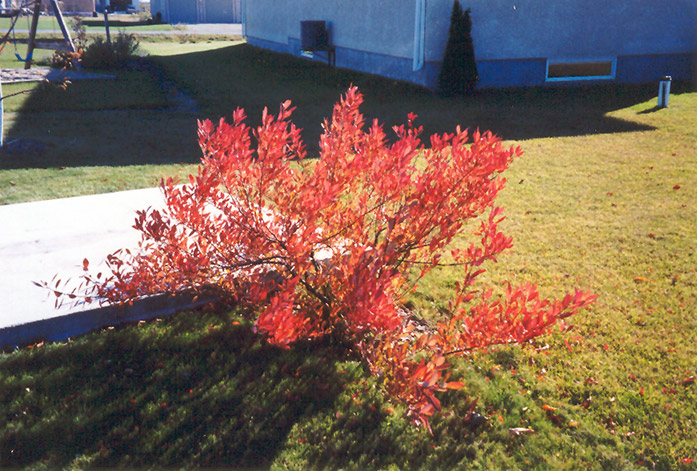Digging deeperPlant Library
Height: 5 feet
Spread: 5 feet
Sunlight:
![]()
Hardiness Zone: 3
Other Names: Sandcherry
Description:
A medium-sized ornamental shrub featuring showy white flowers in spring followed by tart black cherries in summer, good for jams; low growing and wide spreading with good fall color; very hardy and adaptable, excellent for dry locations
Ornamental Features
Western Sandcherry is draped in stunning fragrant white flowers along the branches in mid spring before the leaves. It has grayish green deciduous foliage. The pointy leaves turn an outstanding orange in the fall. The fruits are showy deep purple drupes with black overtones, which are displayed in mid summer.
This plant is primarily grown as an ornamental, but it's also valued for its edible qualities. The small round tart fruit is most often used in the following ways:
- Preserves
Landscape Attributes
Western Sandcherry is a multi-stemmed deciduous shrub with a more or less rounded form. Its relatively fine texture sets it apart from other landscape plants with less refined foliage.
This is a relatively low maintenance shrub, and is best pruned in late winter once the threat of extreme cold has passed. It is a good choice for attracting birds and bees to your yard. Gardeners should be aware of the following characteristic(s) that may warrant special consideration;
- Spreading
Western Sandcherry is recommended for the following landscape applications;
- Mass Planting
- Rock/Alpine Gardens
- General Garden Use
- Orchard/Edible Landscaping
Planting & Growing
Western Sandcherry will grow to be about 5 feet tall at maturity, with a spread of 5 feet. It tends to fill out right to the ground and therefore doesn't necessarily require facer plants in front, and is suitable for planting under power lines. It grows at a medium rate, and under ideal conditions can be expected to live for approximately 20 years. This is a self-pollinating variety, so it doesn't require a second plant nearby to set fruit.
This shrub should only be grown in full sunlight. It prefers dry to average moisture levels with very well-drained soil, and will often die in standing water. It is not particular as to soil type or pH. It is highly tolerant of urban pollution and will even thrive in inner city environments. This species is native to parts of our region.
A NetPS Plant Finder tool
This Plant Library is for informational purposes only. We may or may not carry the items listed. During many times of the year, we may carry many more plants in our store than are listed in the Plant Library. Please contact us directly at 303-690-4722 or visit our store for current availability and for assistance.


